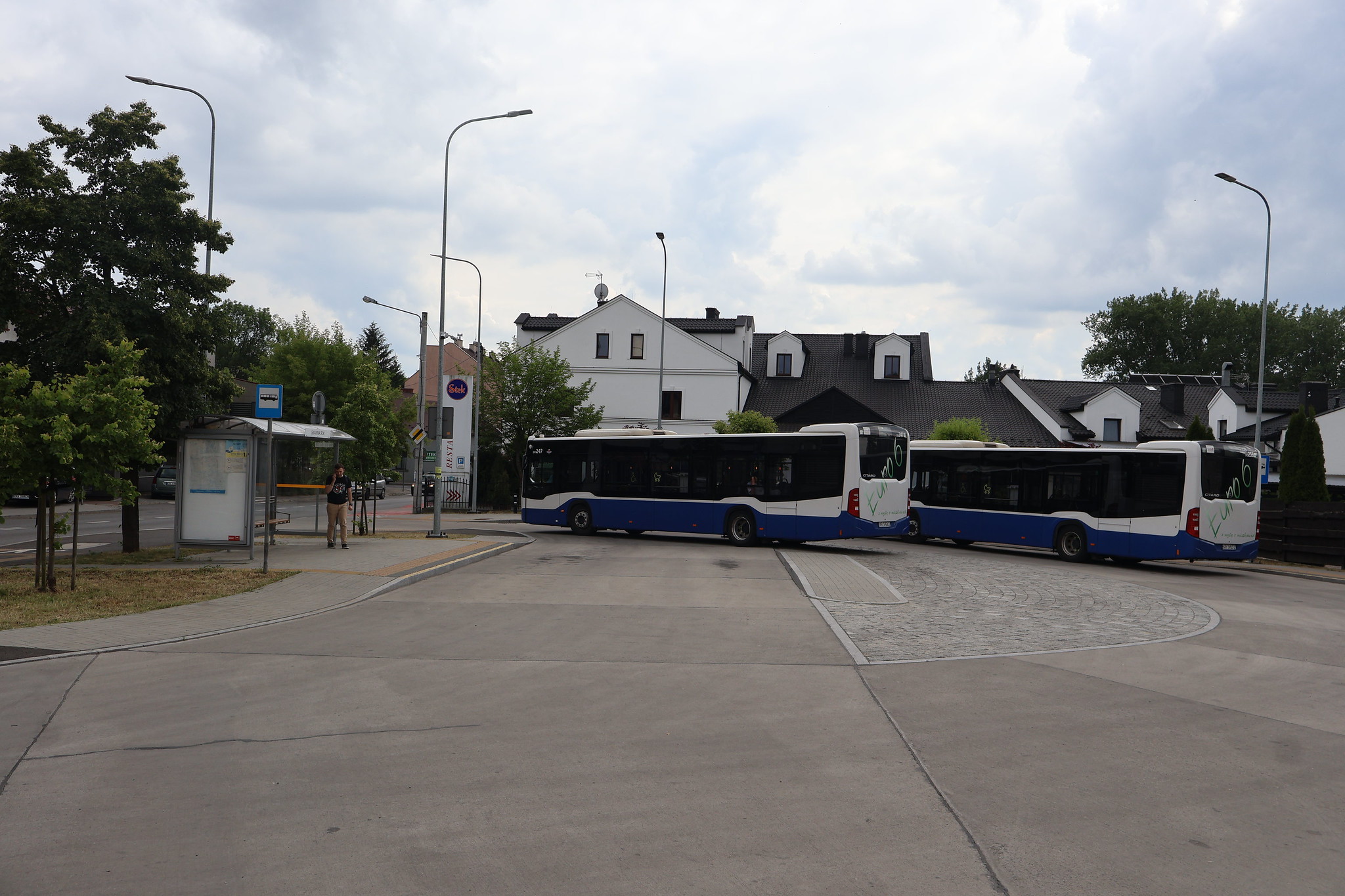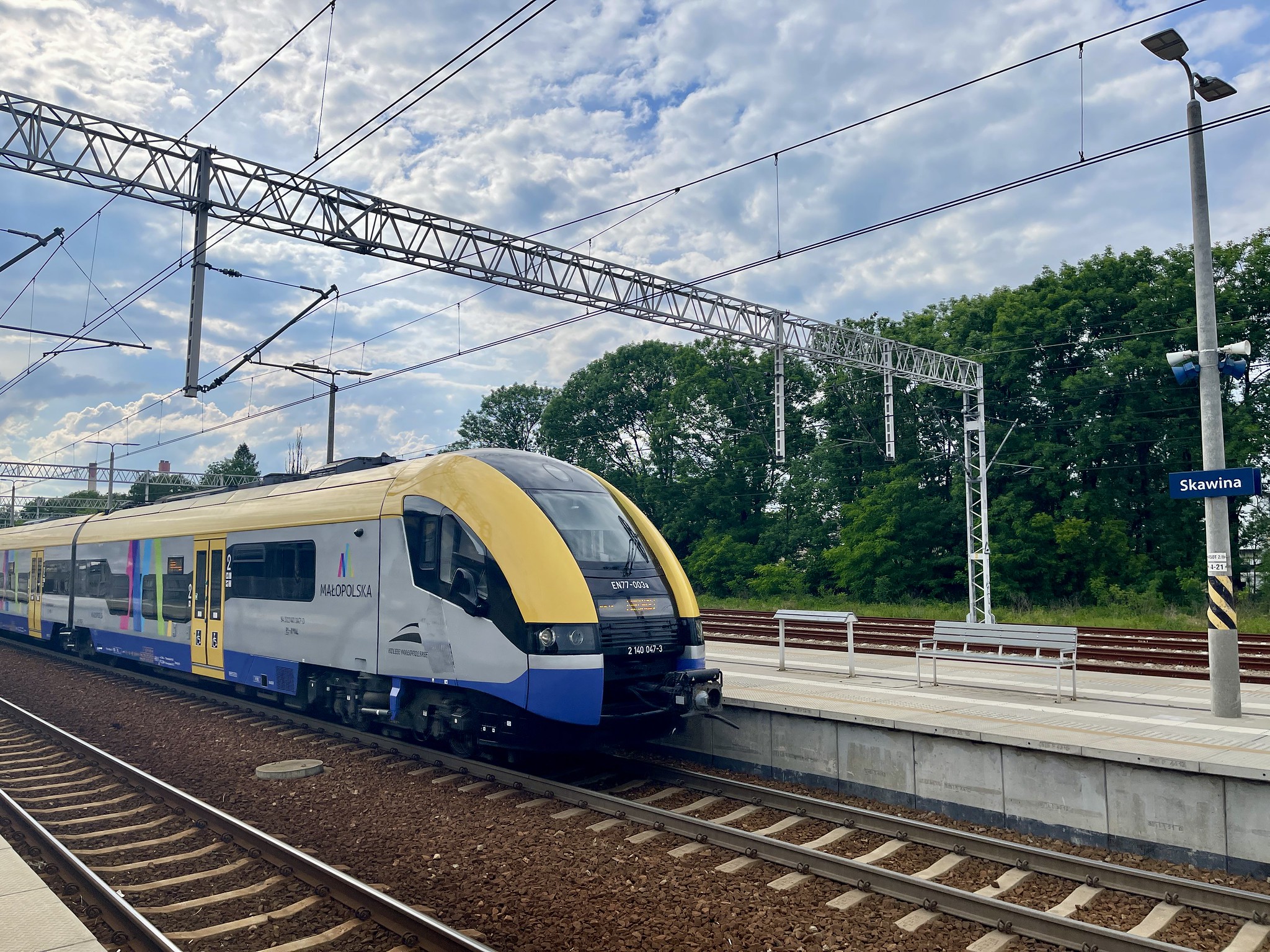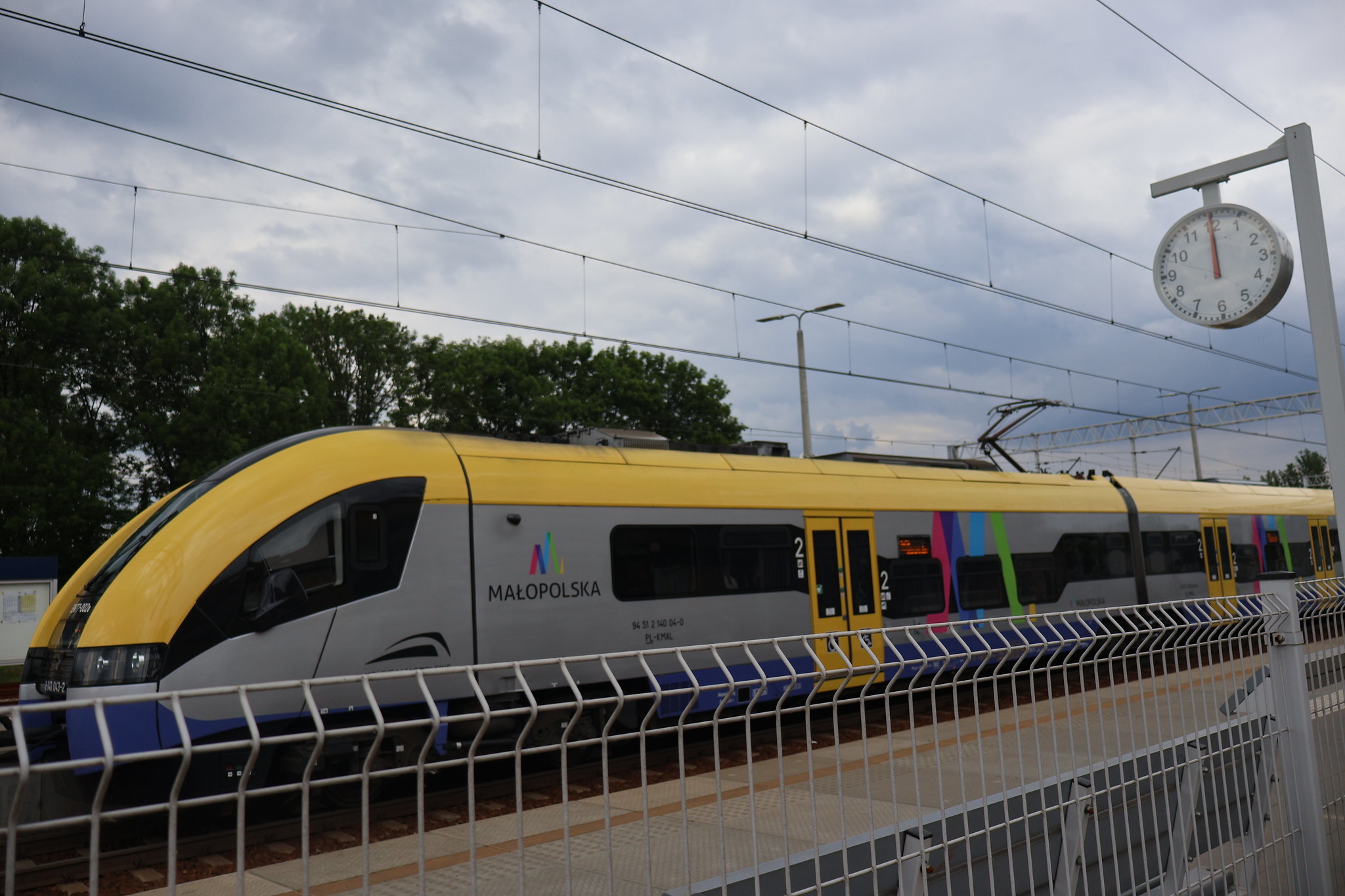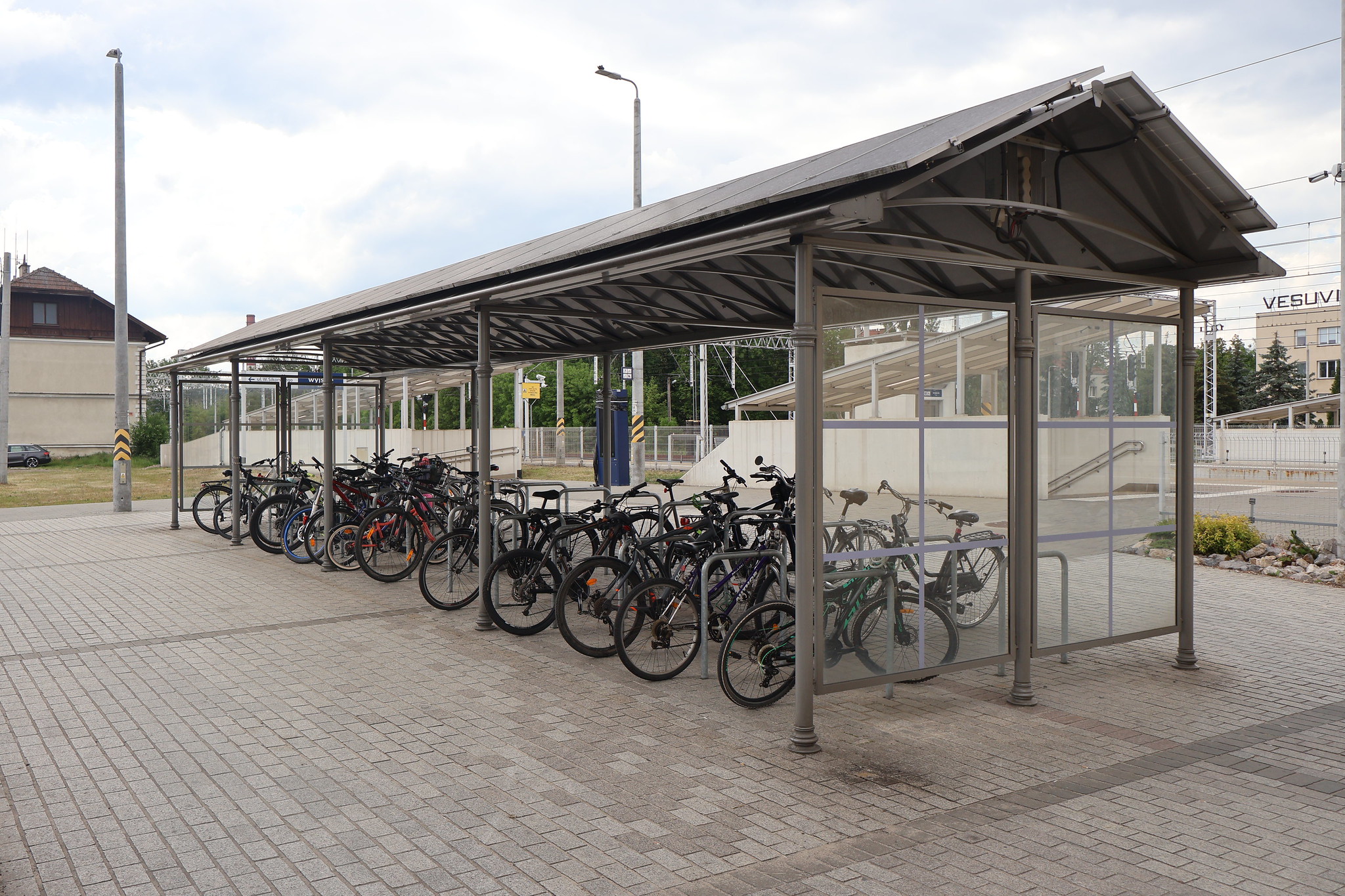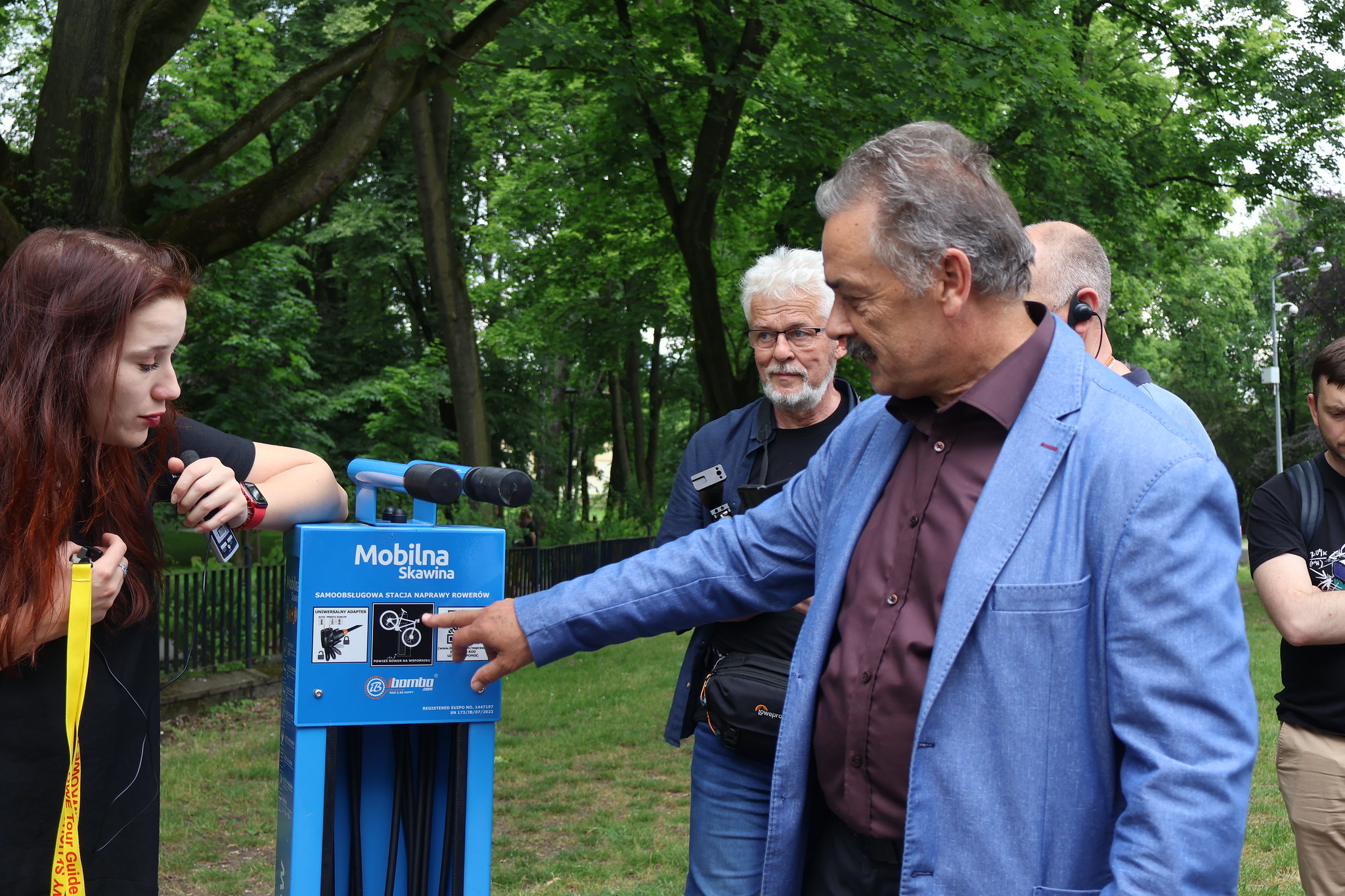The USAID DOBRE Program promotes both the cooperation between local governments in Ukraine and the Polish-Ukrainian cooperation. Therefore, this year’s first group of representatives of Ukrainian communities went on a study visit to Poland.
Nineteen communities from the Dnipropetrovsk, Zaporizhzhia, Kharkiv, Kherson, Chernihiv, Chernivtsi, Ivano-Frankivsk oblasts studied the experience of cities and gminas of the Lesser Poland Voivodeship: they learned how their Polish colleagues stimulate local economic development, organize the activities of communal enterprises, and how a small rural community can achieve energy self-sufficiency and use natural resources for development, how to provide efficient and economical transportation, and introduce innovative and creative solutions in the social and economic spheres. The event was organized and implemented jointly with the Jerzy Regulski Foundation in Support for Local Democracy (FRDL, Poland) under the USAID DOBRE Program.
Inter-municipal cooperation: creating a common development strategy
The Kraków Metropolis Association consists of 15 gminas based in Kraków in the Lesser Poland Voivodeship. The association was founded in 2014 on a voluntary basis to streamline cooperation between the gminas and the big city, create a common development strategy, and attract external funds.
According to Mr. Daniel Wrzoszczyk, director of the Kraków Metropolis Association, such a partnership allows for realizing a common goal and developing various forms of cooperation between local governments to address common problems.
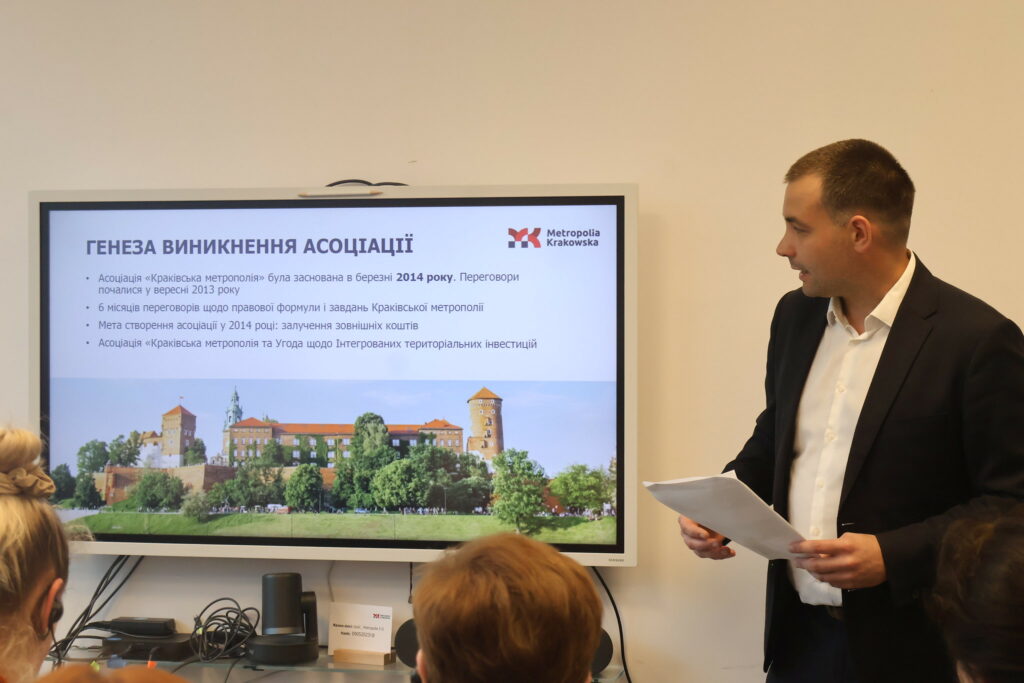
In the Association, all decisions are made only unanimously, regardless of the size of the gmina, so that no local government official acts under duress. All regional wójts, burgomasters, and the mayor of Kraków are members of the general assembly.
It took several years to develop a strategy for such a union, but without this document, it was difficult for the Association to move forward. After all, each gmina has its own interests and vision, so it was not an easy task to formulate a common strategy for supra-local development, but it was feasible.
Thus, the final document in the Kraków Metropolis Association covered seven areas:
– smart management;
– environment and spacing;
– mobility;
– economy;
– leisure culture;
– education;
– social services.
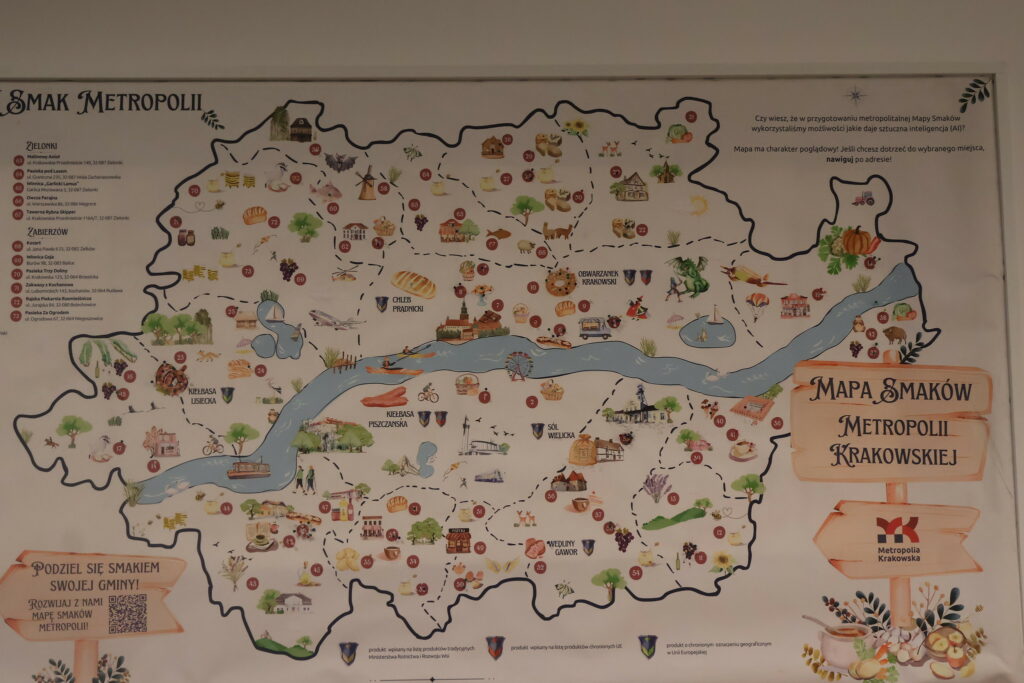
Working committees headed by commune leaders have been set up in each area, and thematic forums are being held. Each commune also has groups of employees responsible for cooperation within the Kraków Metropolis Association.
In terms of funding, the action plan set out in the EBA’s 2030 strategy envisages attracting membership fees from local budgets, money from national and international programs, grants from the European Commission, national aid, and private sector contributions. Through integrated territorial investments from the European Union alone, the Association has received €450 million to implement mobility programs, improve air quality, and thermally modernize buildings.
In general, metropolitan areas such as Kraków are only now beginning to form in Poland. They cooperate on an informal level with the relevant ministries, as well as with other cities within the Union of Polish Metropolises. At the same time, discussions are underway about the importance of approving such forms of cooperation at the legislative level – the adoption of a metropolitan law.
One of the areas in which the Kraków Metropolis Association is proud to be involved is spatial planning. The fact is that in Poland, gminas have quite a lot of autonomy and independence in decision-making. Each wójt can, at their own discretion, shape the management and intended use of land in their gmina. Therefore, over time, some spatial conflicts have accumulated between Kraków and neighboring gminas due to previous ill-conceived planning.
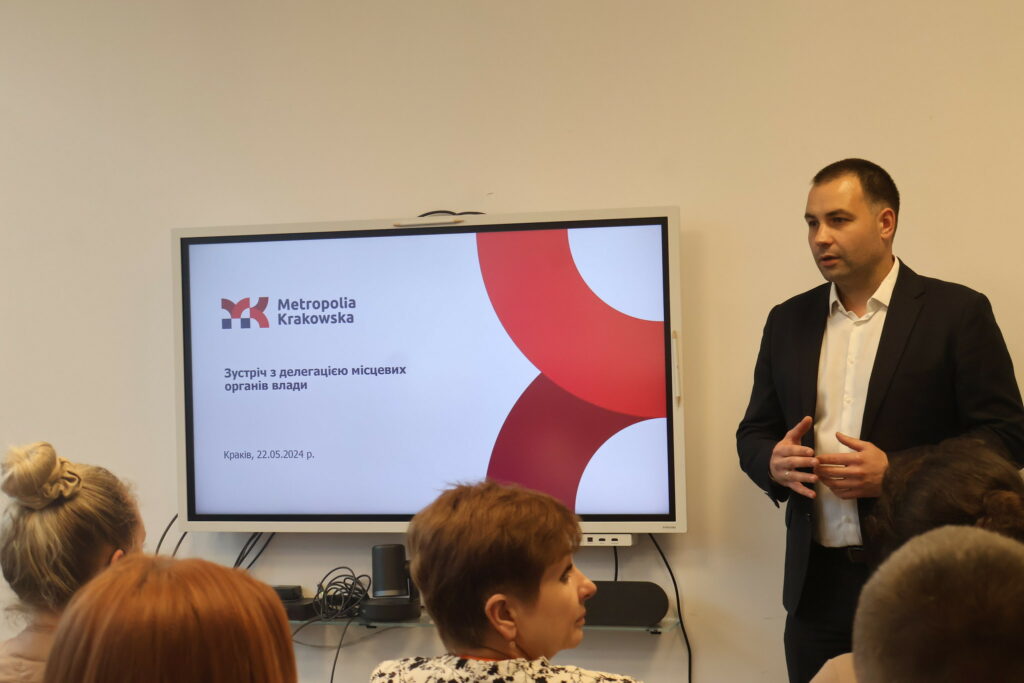
To cope with this task, the Association developed metropolitan strategies for functional space planning, which were among the first such developments in Poland. Later, the organization expanded this cooperation to two large neighboring agglomerations in order to regulate spatial relations between large cities as well.
In its work on spatial planning, the Kraków Metropolis office took into account such important aspects as air movement to avoid smog accumulation; logistics and communication hubs to ensure mobility; concentration of economic zones; location of educational institutions; and identification of areas for leisure activities.
After lengthy discussions last year, gmina leaders finally decided to create a common development space that will consider all territories’ interests. The Association has now begun to formulate a step-by-step action plan for its implementation, and this will be a real revolution in Polish inter-municipal cooperation. For the first time, it will force the authorities of a large city to take into account the interests of small gminas located nearby. Subsequently, this will lead to understanding between the gminas bordering each other.
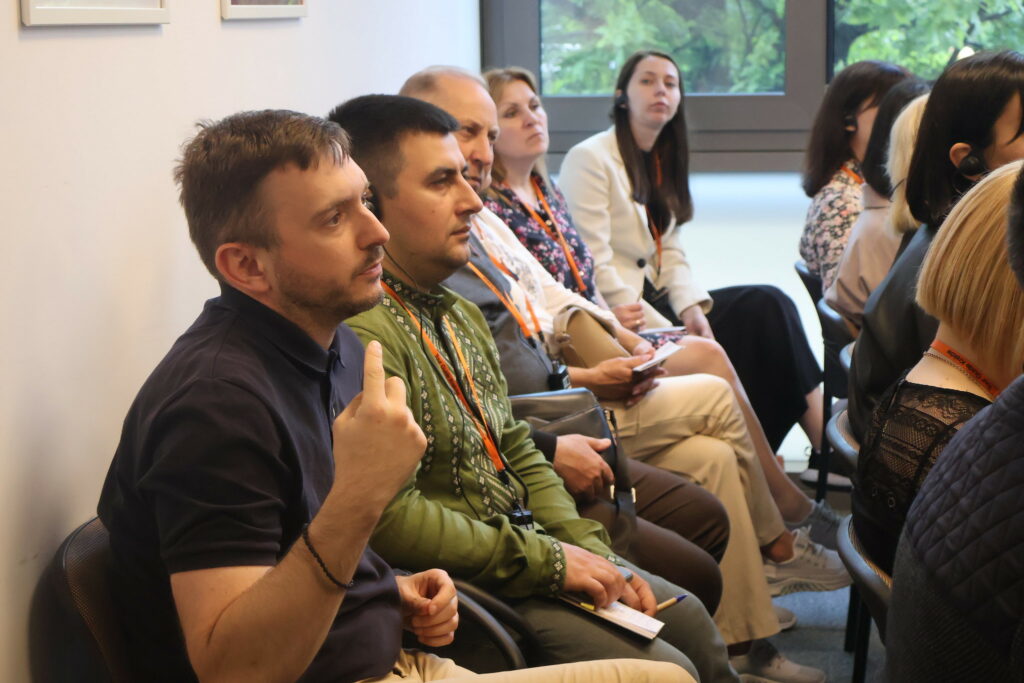
Another problem that has almost been solved with the help of the Kraków Metropolis Association is the improvement of air quality in Kraków. Due to the fact that the city is located in a low-lying area and is surrounded by industrial enterprises, and most importantly, it used coal heating for its homes, smog became a real problem for its residents. Back in 2010, the Kraków Smog Alert civic movement was formed to demand that the authorities address this problem. As a result, the sejmik of the Lesser Poland Voivodeship adopted a resolution that banned the use of coal-fired boilers and other heating equipment that did not have the appropriate certification for a certain environmental class in Kraków starting in 2019.
Residents of the big city readily joined the process of replacing their boilers thanks to the subsidies that were allocated for this purpose. However, the neighboring communes were indifferent to this, continuing to operate outdated equipment that polluted the air with harmful emissions. After all, no measurements were taken in the neighboring areas of Kraków, and therefore, people believed that they were not personally in danger.
Therefore, the Association first of all undertook a powerful information campaign, explaining to consumers why boiler replacement is important not only for the big city, but also for neighboring gminas. It also managed to get money from European funds so that the new equipment would not hit homeowners’ pockets so hard. The national program, which allocated up to 50% of subsidies to consumers for boiler replacement and canceled all subsidies to households that operated outdated equipment, also helped significantly. At the same time, Kraków Metropolis financed the positions of environmental advisors in the communes to help residents make the transition to new boilers faster and easier. As a result, as of March 2024, 35,000 households had their old equipment replaced. And only 10 thousand homes still need to be updated. In terms of environmental impact, for example, the Skawina gmina, which used to be among the five most polluted in Europe, was able to reduce the number of days with exceeding pollution levels from 23 to 9 per month.
“I can say that we have become a leader in Poland in this area because nowhere else have gminas and the city worked so well together to improve air quality,” said Mr. Daniel Wrzeszczyk.
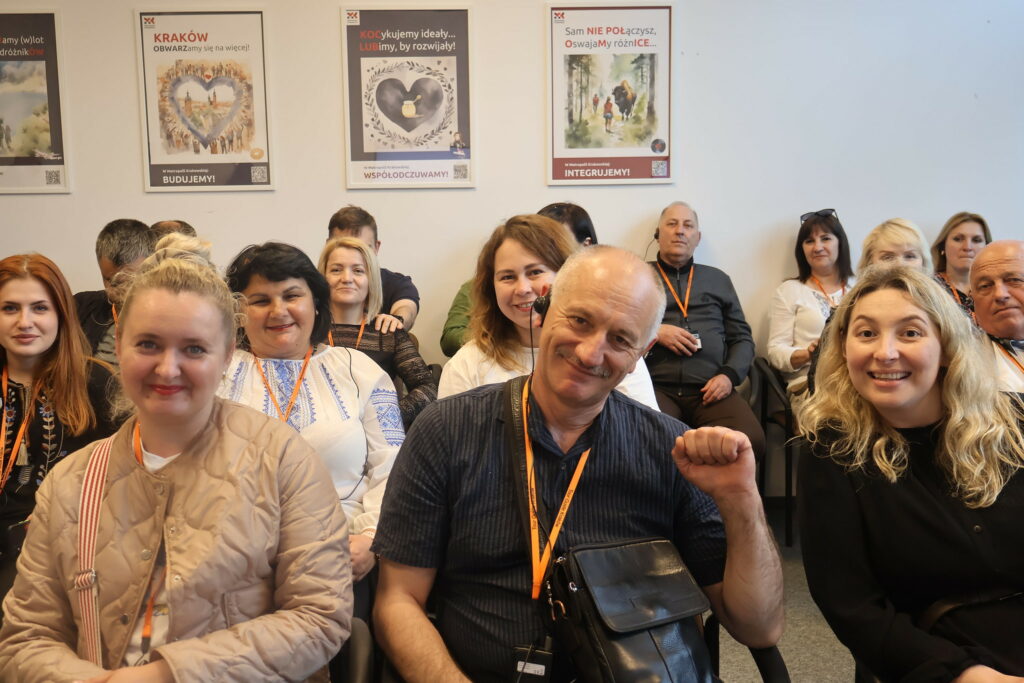
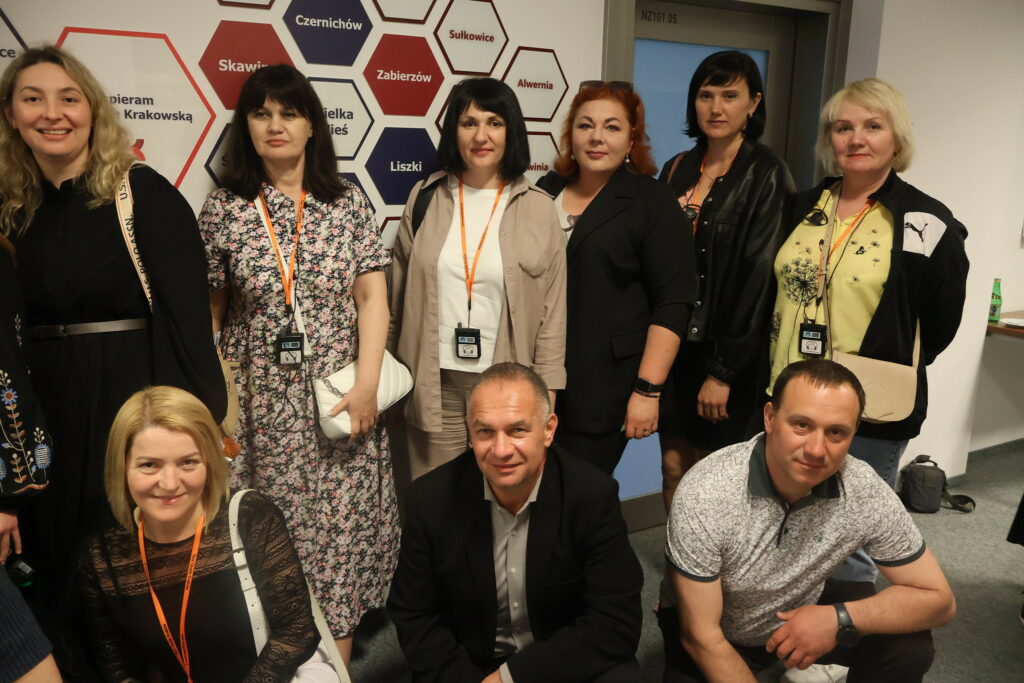
Cooperation between government and business: creating an attractive investment environment
Kraków is the administrative center of the Lesser Poland Voivodeship and the second-largest city in Poland. The city has about 800 thousand inhabitants, and the local budget revenue is more than 7.2 billion zł (around $1.8 billion) per year, which makes Kraków the second richest municipality in the country after Warsaw.
In 1999, the city established the Kraków Technology Park (KTP), an institution that supports business through the creation of alliances and platforms for cooperation throughout the entire Lesser Poland Voivodeship. The organization, 80% of which is owned by the state, promotes business, creates practical tools to support entrepreneurship, and attracts investment to the region. In the last 6 years alone, it has created almost 5,000 jobs and attracted 6.3 billion zł (about $1.6 billion) in investments.
According to Mr. Jacek Liguziński, the coordinator of KTP’s investment direction, their organization operates in two areas:
1. Attracting investors through targeted programs that provide a number of benefits for new businesses that are willing to operate in the area.
2. Creating an investment-attractive infrastructure: offering to lease premises on preferential terms, documentary support for startups in the first period of their operations, and providing various types of assistance.
At the same time, Kraków Technology Park is working on implementing innovative technologies in its activities, such as the use of satellite data for business. Due to the gradual transition of Poland’s industrial capacities to green energy, the organization also joined the creation of the Lesser Poland Hydrogen Storage and Transportation Center. On a regular basis, specialized conferences, workshops, meetings of business with local governments to find joint solutions and other important events are held here.
Currently, the KTP business incubator has about 100 companies that benefit from preferential rent and a support program. The organization assists them in finding solutions to maximize the automation of production processes and accelerate their development using Industry 4.0 technologies. (Industry 4.0, or the Fourth Industrial Revolution, is a general term for several technological capabilities that allow manufacturers to work more efficiently by automating processes and integrating various industry devices and systems). In total, KTP has more than 200 graduates of acceleration programs and 40 start-up investors who started their businesses thanks to such support.
“We support companies from the very beginning when they come to us with their idea to see if it makes sense, right up to cooperation with large and mature companies that we help develop and enter international markets,” explained Mr. Jarosław Komorniczak, Cooperation Specialist at Kraków Technology Park, “We also use EU grants and support international activities, i.e., we promote our Lesser Poland economy abroad.“
What are the competencies of the Kraków Technology Park?
1. The ability to issue various administrative decisions on the basis of which entrepreneurs receive tax benefits for the realization of their investments.
2. Assistance in the selection of office space or land for business activities thanks to the created database of investment territories.
3. Involvement of local governments in the creation of investment proposals in accordance with the developed Investor Service Standards of Lesser Poland to solve their tasks: reducing unemployment or attracting certain types of business.
4. Cooperation in the territory of Lesser Poland with both large and small and medium-sized businesses through the unified action program Polish Investment Zone approved in 2018.
5. Training and assistance to young businesses in using various national programs, including preferential taxation for startups.
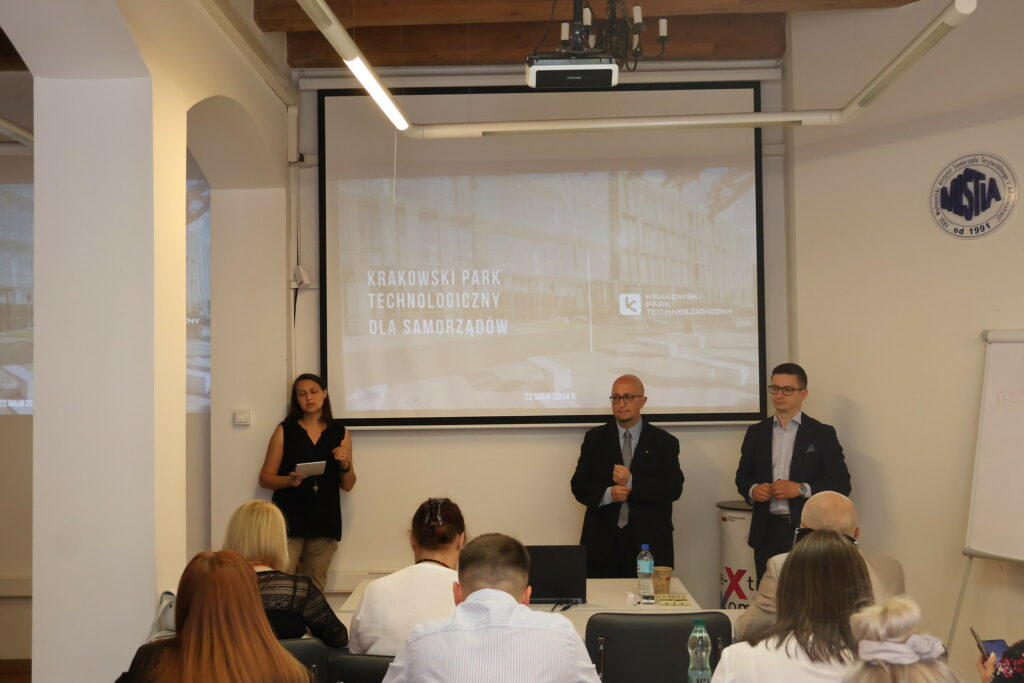
The Kraków Technology Park experts emphasize that constant communication between local governments and businesses is essential for creating an attractive investment climate in gminas. After all, entrepreneurs are often looking for a territory that meets their requirements and has proper communication. And they are ready to co-finance together with local governments to ensure that a particular site meets these criteria. For example, they are involved in the construction or repair of roads, communications, and cooperation with local entrepreneurs to create the service infrastructure of the investment site. Such interaction often helps local governments solve their problems much faster than accumulating funds in the local budget.
“We always emphasize to our local governments that an investor is not a one-time customer who comes to our store, buys a pie, and leaves. The investor is like our spouse who stays to live with us,” says Mr. Jacek Liguziński. “The investors will not only bring revenue to the budget but will also participate in the life of the gmina, sponsor local sports or artistic groups and events, and eventually become part of the community with which they develop their business.”
The expert notes that their organization will not be able to replace gminas in the current servicing of the investor and will not solve problems that fall within the competence of local governments. Instead, it is ready to support them with its knowledge and contacts. Therefore, KTP’s main areas of cooperation with local governments are as follows:
– We support,
– We teach,
– We help.
According to Mr. Jacek Liguziński, Ukraine’s communities can start building their own investor relations system today. To do this, the following steps should be taken:
– conduct a large-scale analysis of their own advantages and disadvantages and plan their own investment strategy;
– generate a comprehensive investment proposal, taking into account the conditions and needs of the community;
– create an easily accessible and searchable page on your website where investors can find all the information they need;
– create a complete procedure for cooperation with the investor down to the smallest detail;
– appoint a specific person or persons in the local government to deal exclusively with the investment sector;
– establish a mechanism for full support of the investor in obtaining permits as soon as possible.
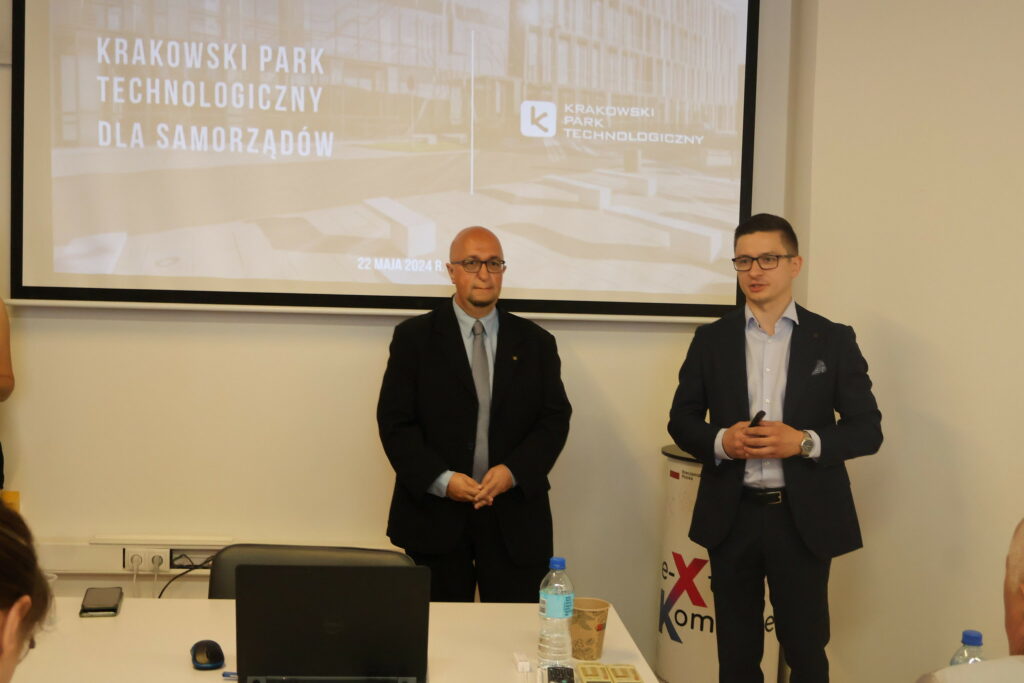
The process of implementing these steps will take a long time, but when potential investors appear on the horizon, the community will be fully prepared to accept them. Otherwise, they will look for faster solutions in other territories. For example, Kraków Technology Park has been developing its Investor Service Standards for Lesser Poland program for almost three years. This helped standardize local governments’ principles and approaches to cooperation with investors. After that, the gminas began to add specific employees to their staffing lists who were exclusively responsible for this area and who had received appropriate training from KTP. Local governments have also realized that investors will never come to a territory where the wójt or mayor does not show interest in them and does not demonstrate that they are willing to cooperate and are ready to make a positive decision. After all, often in the process of communication between an entrepreneur and an employee responsible for investments, issues arise that are only within the competence of the local government leadership, and therefore, they should be as involved as possible and quickly available to resolve them.
“I liked the very correct policy of dealing with land plots located on the territory of the gmina, and in our case, the community,” shared his impressions Mr. Oleh Topikha, Head of the Northwest Regions Division of the Department for Implementation of Priority Projects for Regional Development and Critical Infrastructure of the Ministry of Communities, Territories and Infrastructure of Ukraine, “because the main task of the community is to create conditions for investors to have the desire and opportunity to invest there. In Poland, we have seen vivid examples of how land plots were successfully chosen and connected to communications; therefore, certain economic zones were created. This allowed the attraction of a variety of world-renowned enterprises to the territory of a particular gmina. And we were able to make sure that this has a sustainable long-term effect.“
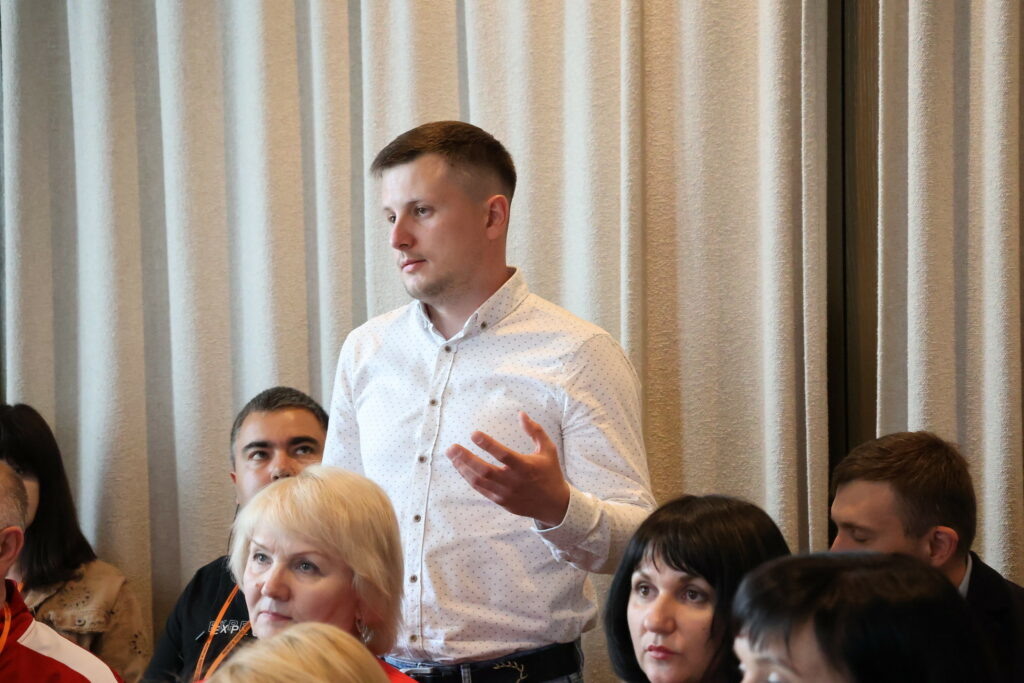
By the way, KTP believes that local governments should not focus on finding only large businesses, as small businesses and entrepreneurs can often bring good investments. They also believe that close cooperation between neighboring communes, which can share experiences and develop joint plans, has a positive impact on the investment environment.
Logistics solutions: we build convenient, mobile, and profitable infrastructure
Recently, the improved passenger transportation system in Skawina, a municipality near Kraków, has encouraged residents to prefer public transportation to their own cars, which caused traffic jams and air pollution. After all, there are 44,000 registered cars for 43,000 residents, as it was not so long ago the main means of commuting to Kraków.
It all started with the creation of a sustainable mobility plan for Skawina in 2016. All residents of the gmina were involved in its preparation via surveys, indicating which logistics would be most convenient for them and how they see its implementation. Since then, the local government has been gradually implementing the approved list of actions while attracting external investments.
The main transportation and logistics hub in the city is the railway station, which is a listed building. The railroad was laid through the municipality 140 years ago, and this is one of its logistical advantages. Two years ago, the agglomeration railroad started operating here, with three dozen trains running daily at short intervals, carrying 4,000 passengers to and from the gmina. This connection has its huge advantages, as it avoids traffic jams, is cheaper and faster than driving a car, and the train always arrives at its destination on time. It is currently the best way to get from Kraków to Skawina and vice versa.
Next to the station, the local authorities built a transport interchange for local and intercity buses with a passenger pickup and drop-off area. This allowed residents and guests of Skawina to make convenient train transfers. The bus routes are organized by the Kraków City Transport Company in exchange for compensation from the Skawina gmina budget.
The station building, built in 1886, was transferred by the railroad to the municipality 7 years ago in a dilapidated state. The authorities of Skawina invested millions of zlotys to completely renovate it. As a result, it houses not only a cozy waiting room, but also the main hall of the city’s public library with a multimedia department and reading room, and a coffee shop, which have transformed the old station into a modern public space.
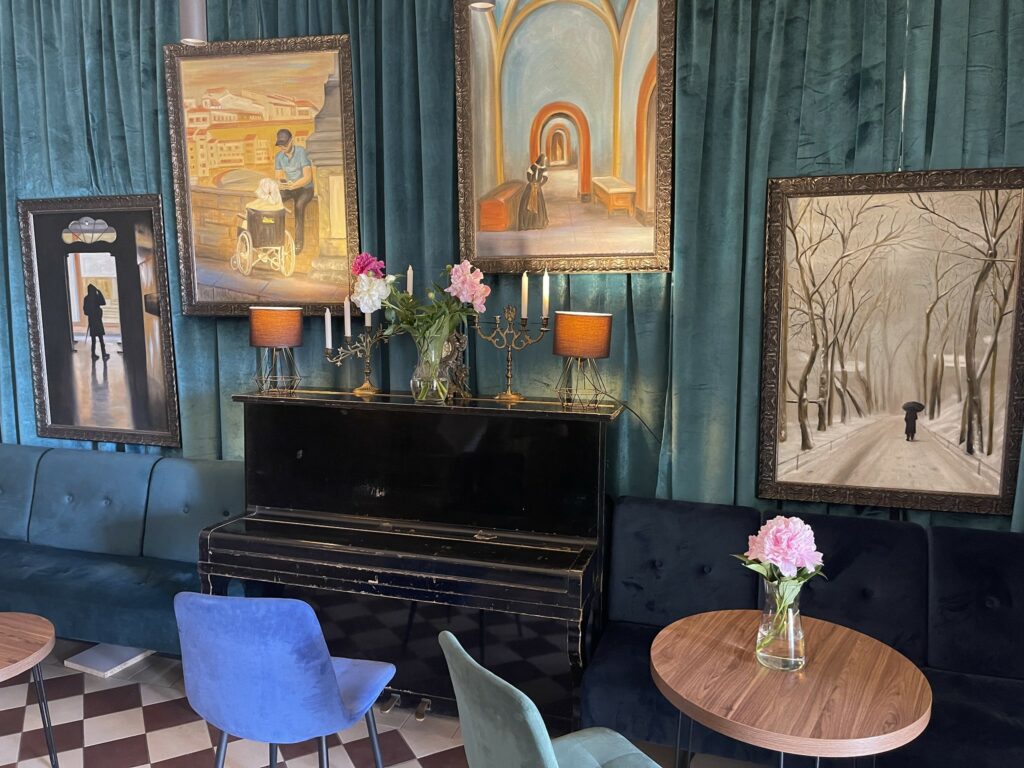
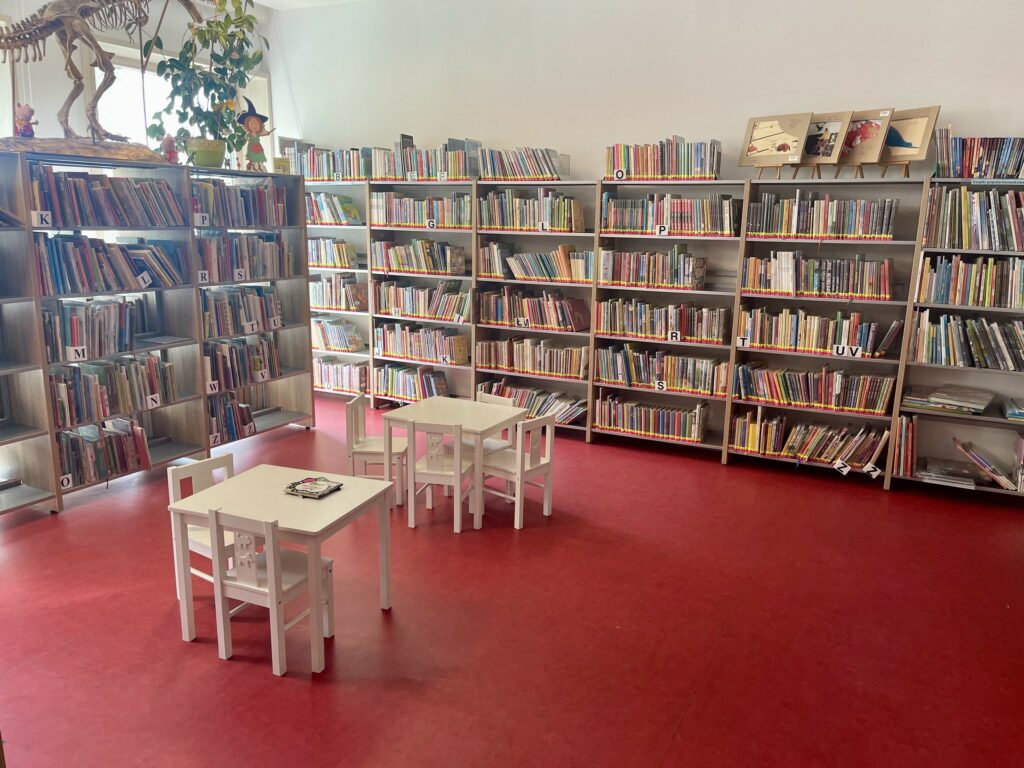
A large Park and Ride parking lot for 500 cars was arranged on the other side of the station. Some of the parking spaces are reserved for drivers who come here to transfer to public transportation. If a person has a ticket or travel document, he or she can park his or her car for free. This decision has encouraged many car owners to use buses and trains to get to Kraków more often, as it has become faster, more convenient and cheaper for them.
With the assistance of the Kraków Metropolis Association, the Skawina gmina joined the system of a single metro ticket – the “Lesser Poland Agglomeration Card” – for travel on any public transport within the entire metropolis for only 169 zł ($42) per month. Schoolchildren travel for free during the school year.
However, Skawina pays perhaps the most attention to the development and popularization of cycling, having increased the length of its bicycle paths from 3 to 40 kilometers over the past seven years. Large covered parking lots have been built near the station and in many other places. The total investment in this project amounted to about 40 million zlotys, of which 80% came from external investments.
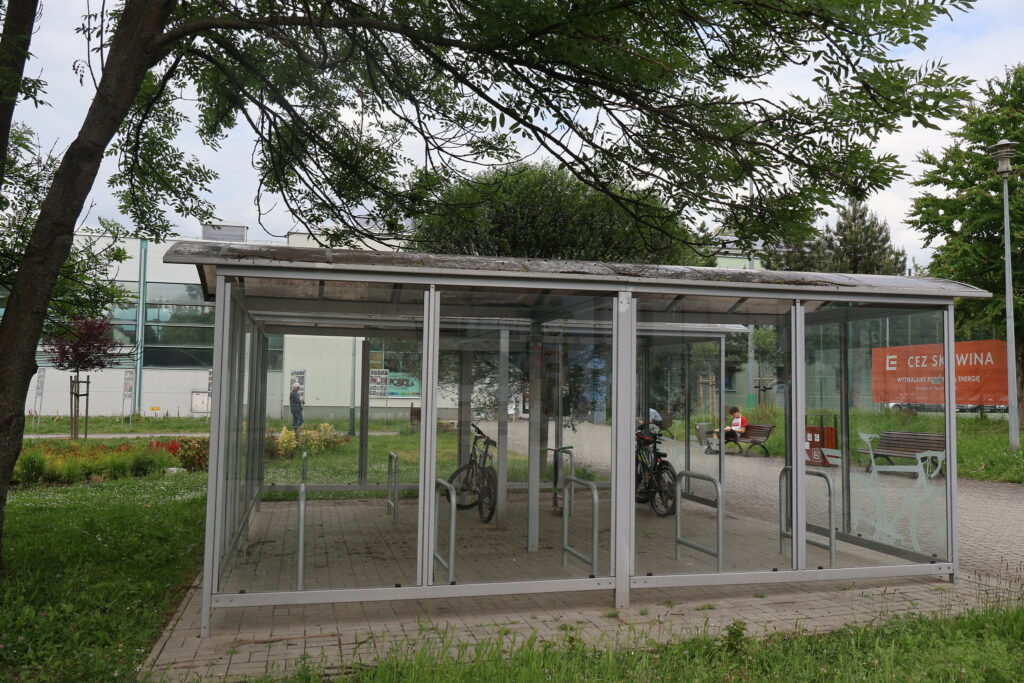
As the mayor of Skawina, Mr. Norbert Rzepisko, told the study tour participants, local officials are leading by example in promoting cycling in the gmina. Both during working hours and on weekends, they ride bicycles or electric scooters, demonstrating their speed and environmental friendliness. And it’s true, because there are convenient routes for cyclists that allow them to get to the correct address in the city in a matter of minutes. The mayor’s office has even introduced the position of a pedestrian officer, who, among other things, teaches children, youth and the elderly how to use bicycles safely.
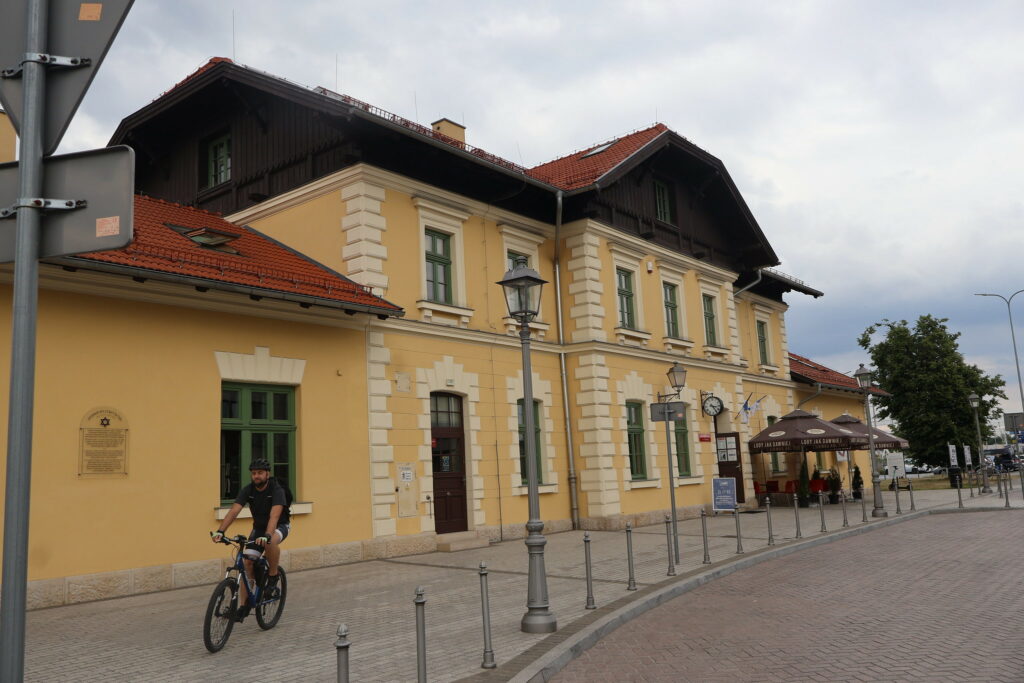
In order to ensure the strength and durability of the bicycle paths, they are covered with concrete in Skawina. It does not heat up as much in summer as asphalt, it does not form wheel ruts, concrete is odorless and has good light reflection. That is, in the dark, the movement of an object on it is much better visible than on an asphalt surface. This allows the city to use less powerful electric lamps for street lighting.
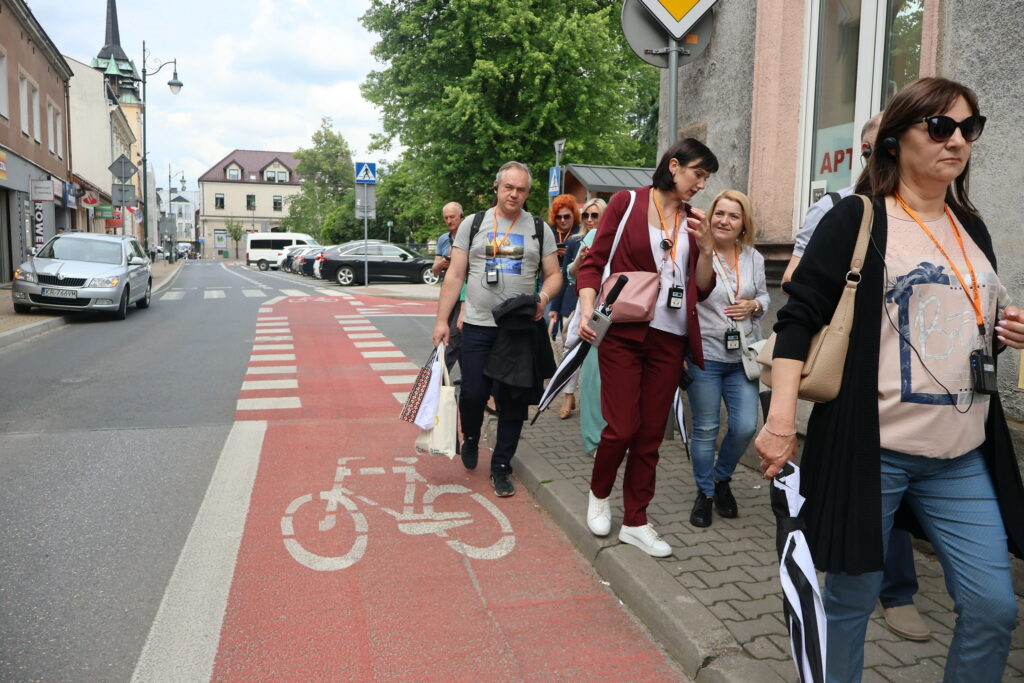
Children living in the municipality are strongly encouraged to use bicycles to get to their schools. Every year, Skawina organizes the “Bike May” campaign in all primary and secondary schools. For a month, more than 3,000 children ride to schools and kindergartens exclusively on bicycles and scooters, receiving various awards for doing so. They are often accompanied by their parents, who also switch to this eco-friendly transportation. This way, the residents of Skawina develop the habit of cycling from an early age.
Eight bicycle repair stations installed along different routes were relatively inexpensive for the urban gmina, costing approximately 5,000 zł ($1,250) each. By scanning a QR code at such a station, a cyclist gets access to instructions on how to fix a breakdown and which of the tools are available there. This service is absolutely free and has become another advantage of cycling in Skawina.
Thanks to this strategic approach to streamlining passenger transportation, the municipality managed to increase the number of bus users by 15% in a short time and the number of passenger trips by rail by 1 million per year. Also, due to the sharp decrease in motor vehicles on the roads in Skawina, the environmental indicators of air quality have more than doubled. The famous Skawina traffic jams on the outbound roads to Kraków, which were known throughout Poland, have also disappeared.
“I was very impressed by the reconstruction of the old train station and the creation of a public space in it,” said Ms. Tetyana Danyliv, spatial planning expert at the local association of local governments of the Ivano-Frankivsk Oblast community development agency, “Because we also have abandoned buildings, and they are unsightly and in many places have not been fulfilling their functions for a long time. I think that in the future we also need to develop such projects. Maybe not identical, but similar institutions, since they are located in crowded places, so they will be very popular.”
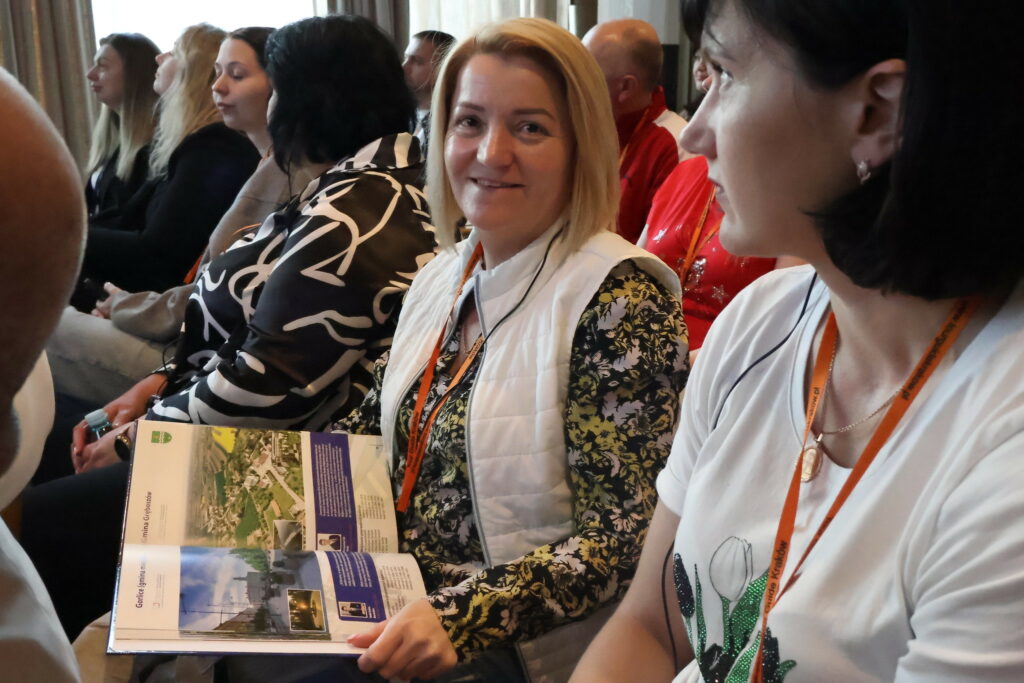
Of course, Polish gminas implementing transport innovations still face many challenges: partially outdated buses and train cars, interference with the systematic operation of public transport by private carriers, and a lack of free seats during peak hours. But local governments are gradually addressing them by seeking investment, holding dialogues, and developing solutions. The main thing is not to stop there.
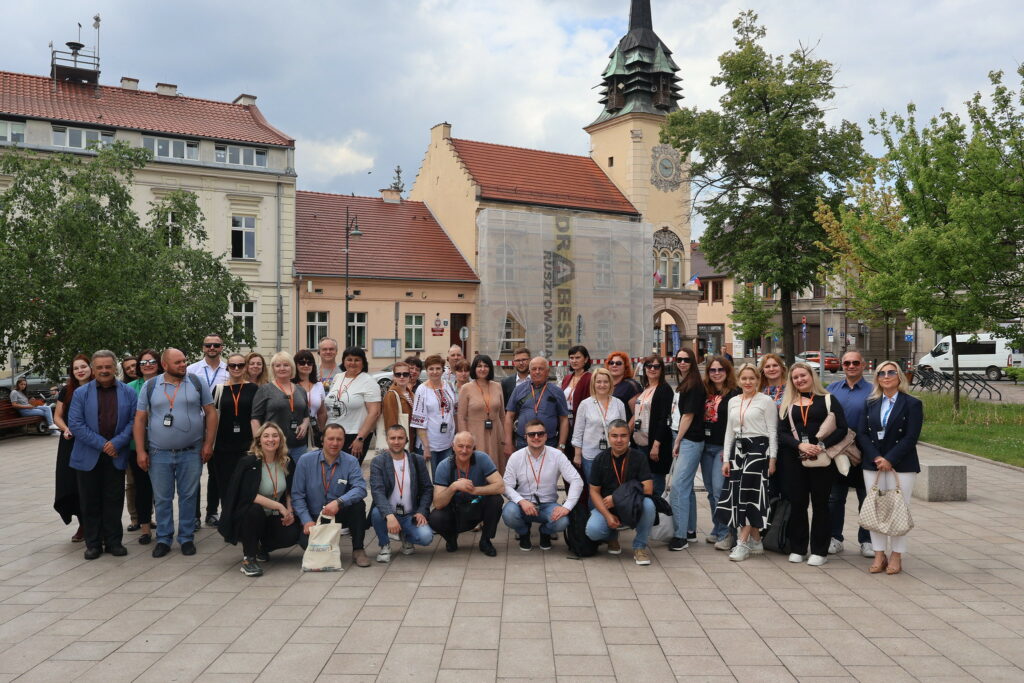
Tourist attractiveness: looking for pearls in the available resources
The largest rural gmina in Podhale (a region also known as Polish Highlands), Nowy Targ, located almost on the border with the Slovak Tatras in the Upper Danube River basin, has decided to make good use of its special natural landscape to attract tourists. Thus, last year, the Brama w Gorce (pol. Gate to the Gorce Mountains) educational and nature center appeared there in the middle of the forest.
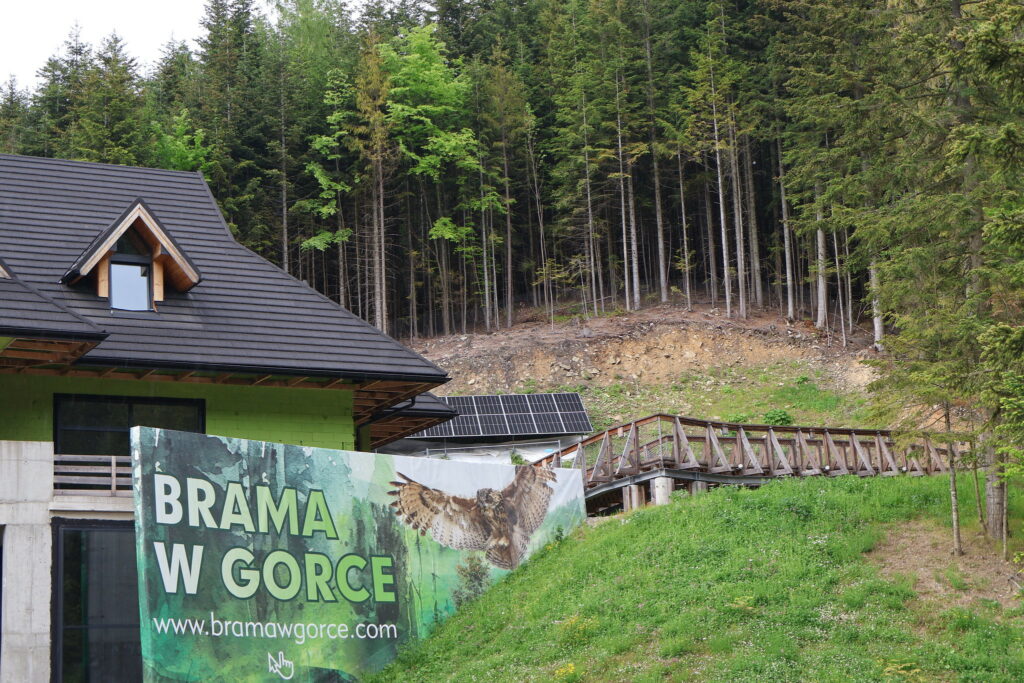
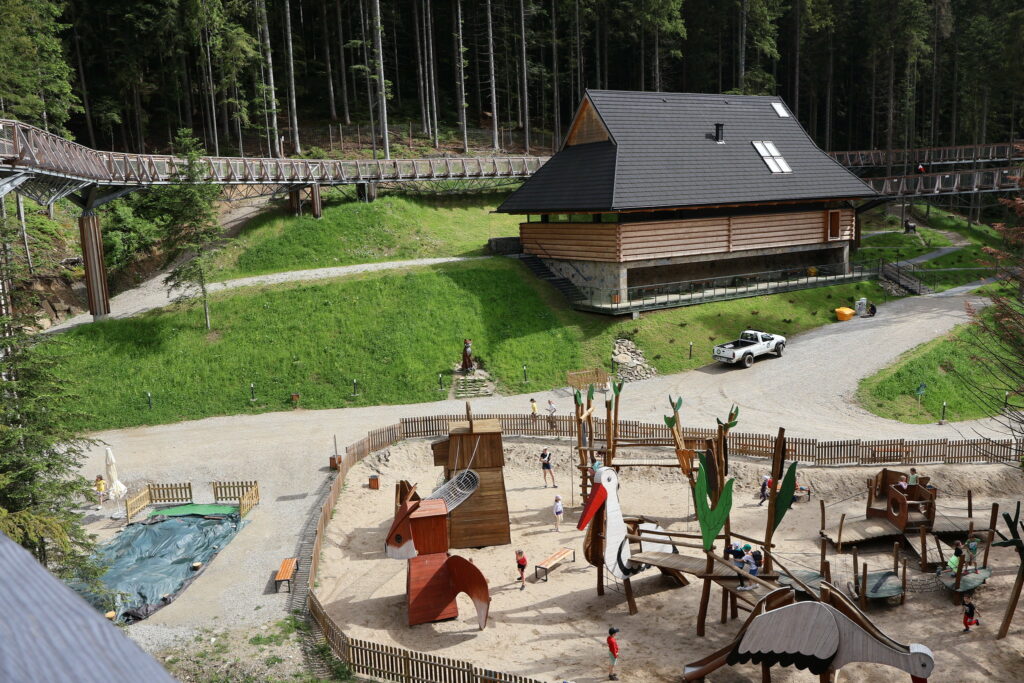
The private company that developed and implemented this costly project was founded by 109 residents of Nowy Targ and neighboring gminas. The implementation process lasted 9 years: they made changes to the development plan for the area, conducted technical analysis, studied the experience of similar projects in Europe, and obtained the necessary permits and approvals. The total investment in the project amounted to 34 million zł (about $8.5 mln), of which 5.5 million were funds from the European Union and the rest were shareholders’ own contributions. More than a million zlotys were spent on a marketing campaign to make the educational and nature center known to as many people as possible. Local companies were able to win contracts in tenders, which became a support for local entrepreneurs. In just one year of operation, Brama w Gorce received 140 thousand visitors, became the municipality’s largest taxpayer, paid 400,000 zł ($100,000) to the local budget, and employed several dozen local residents. In the future, the company plans to attract up to 300 thousand tourists annually.
When developing the idea of such a tourism project, the gmina applied the following approaches:
– studied other people’s experiences and took existing similar projects as an example;
– analyzed its own natural, logistics and investment resources that could be maximally utilized;
– simultaneously developed a plan for the tourist complex’s infrastructure to facilitate access and service for visitors.
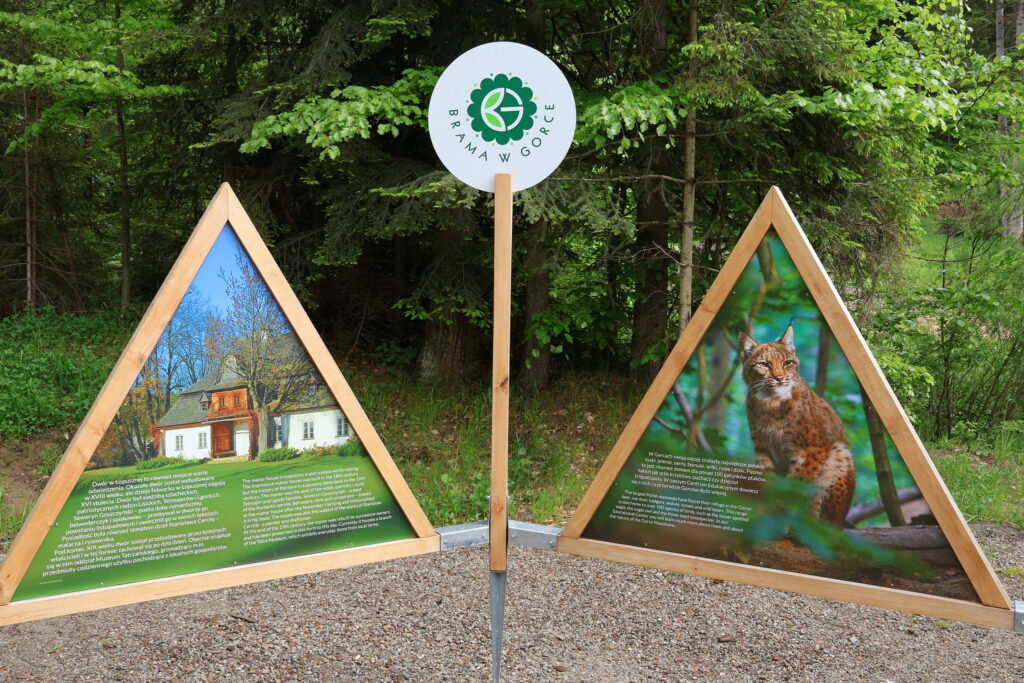
The land issue was a sensitive one in this project. After all, the territory where the tourist facility was planned to be built belonged to a nearby village. The gmina managed to regulate the legal status of these lands, and as a result, all the villagers became co-owners of the 60-hectare land area. The private company implementing the project then leased 6 hectares of the required land from them. At the same time, the village community was also invited to become a shareholder in the tourist facility and began to feel like its co-authors and owners. This helped to quickly resolve many disputes, as the villagers now had every reason to support the project and contribute to its implementation.
Despite the fact that the founder of the Brama v Gorce educational and nature center is a private company, the local government helped it in every way possible. At the expense of the gmina, they paved the road to the entrance to the facility, made changes to the city’s development plan, and provided assistance with technical plans. It was the local government that assisted the investors in obtaining numerous permits and approvals from the environmental protection services and the directorate of the national nature park. At the same time, the local government has no stake in the project, but makes sure that the gmina has an efficient enterprise that will bring revenue to the budget. In Poland, this practice is much more common than state-private partnerships allowed by law.
The main idea of Brama w Gorce is a long walk among ancient spruce trees and in the fresh mountain air. The route reaches more than two kilometers and has become the longest pedestrian element in Europe, and the wooden structures underlying it are 1.3 kilometers long. Special attention was paid to inclusive and safety aspects during the construction of the facility. The wooden “path” has a 6% slope so that visitors do not get tired while climbing to the highest point of the route at an altitude of 36 meters. There are no steps, sharp turns or spirals, and the mesh handrails are 120 centimeters high. There is only one direction of traffic, so that groups of tourists starting and ending the walk do not intersect and interfere with each other. There are also emergency exits equipped with video monitoring. A large playground for kids and a mini-zoo with mountain animals were built downstairs, and a cozy cafe was built in the middle of the route. Throughout the walk, tourists will find a variety of interesting and informative entertainment. The route is designed for visits throughout the year, and each season has its own types of leisure activities.
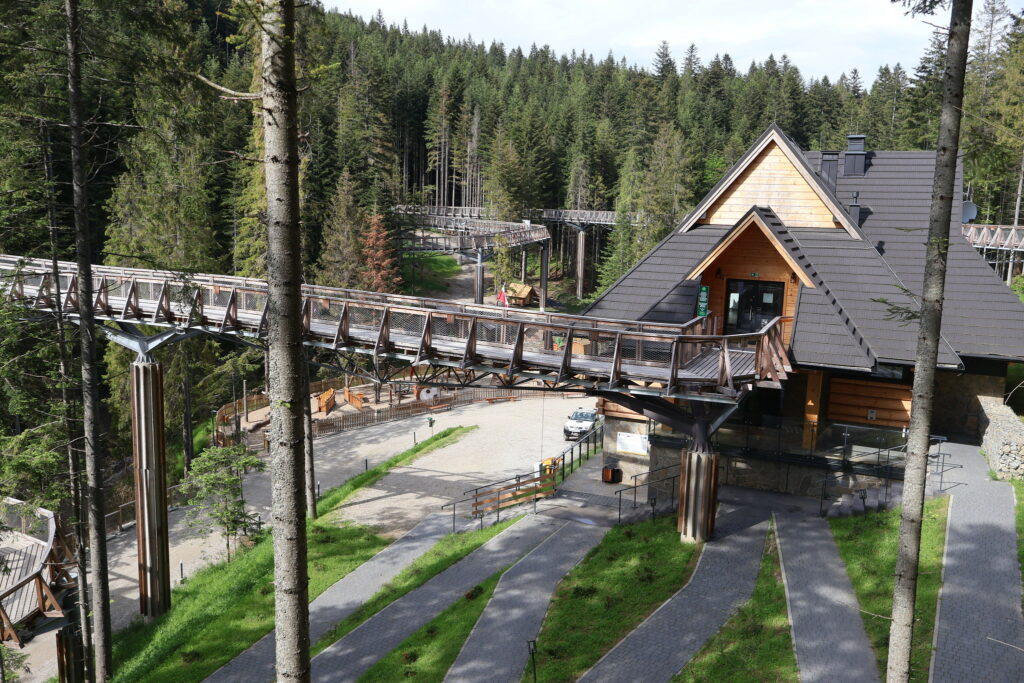
The company has also made its pricing policy flexible and with advantages for residents of its gmina – the ticket is almost 40% cheaper for them. And for children from local schools and kindergartens, such leisure is free.
To ensure the sustainability and durability of the project, the company paid great attention to the quality and reliability of the building materials. The wooden structures are actually made of concrete and steel and are only covered with larch elements, which have a lifespan of up to 25 years.
The gmina notes that if successfully implemented, each such large-scale facility will attract various services from other entrepreneurs. For example, the construction of a hotel, paid parking, organization of street food, and passenger transportation. All this will lead to more jobs, local business development, and additional budget revenues.
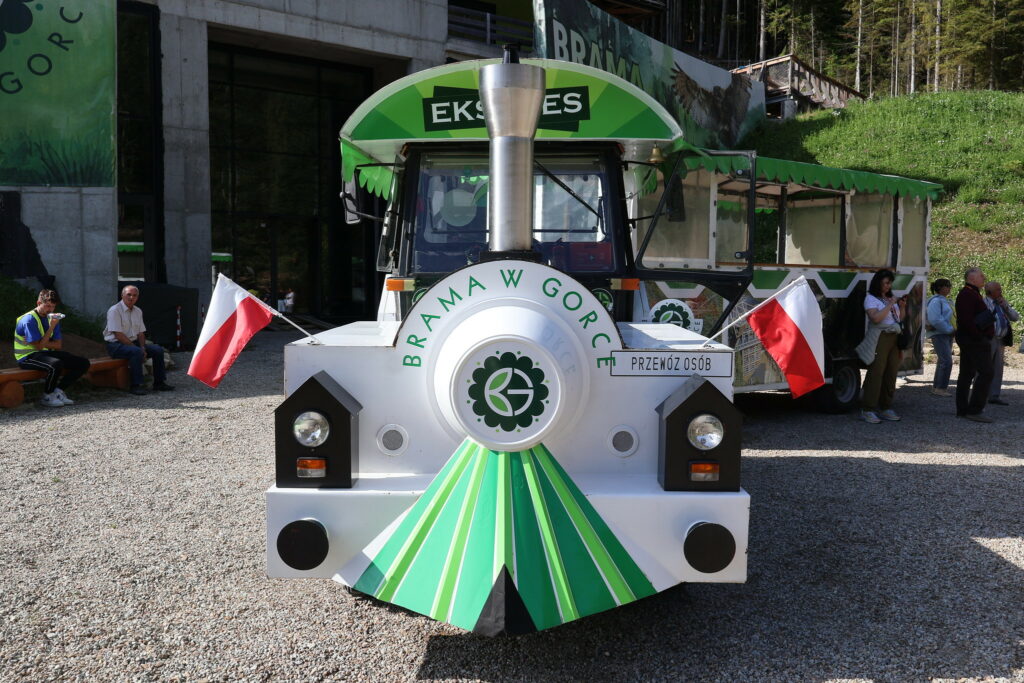
The head of the Brama w Gorce education and nature center, Mr. Marcin Kolasa, explains that residents are often against the fact that local authorities invest budget funds to help new businesses, rather than their needs. In their opinion, instead of building a road to a tourist attraction, it would be better to spend money on repairing the local school, streets, or other needs of the residents. “If we take our project as an example, we paid 400 thousand zł to the local budget during the year of operation, and the gmina spent 2.5 million zł on building the road to the center. The more our center develops, the more income it will bring to the gmina. And the sooner these costs will be recouped, and the community will continue to receive regular revenues from us to address issues important to residents.” Therefore, according to Mr. Marcin Kolasa, it is important for local governments to consider the long-term prospects for implementing such projects, rather than spending efforts only on short-term tasks to please residents. And, of course, to patiently educate people so that they understand the ultimate benefits of such a project.
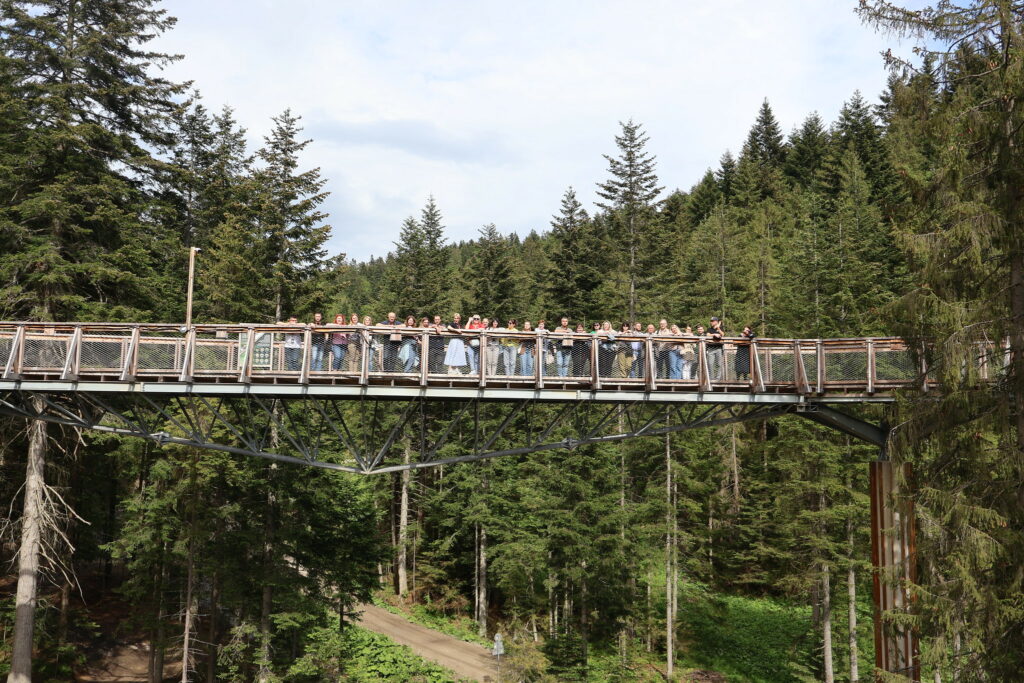
“After visiting this location, I can say that a tourist idea of this format could be implemented in my community in the future,” shared his impressions Mr. Yaroslav Myakushchak, the mayor of Nyzhnyi Verbizh village. – “After all, we now have joint intermunicipal projects under the USAID DOBRE Program, as well as a church under UNESCO protection and such wonderful places where we can also arrange such an attraction. However, unfortunately, we do not have such resources at the moment, because the country is at war.”
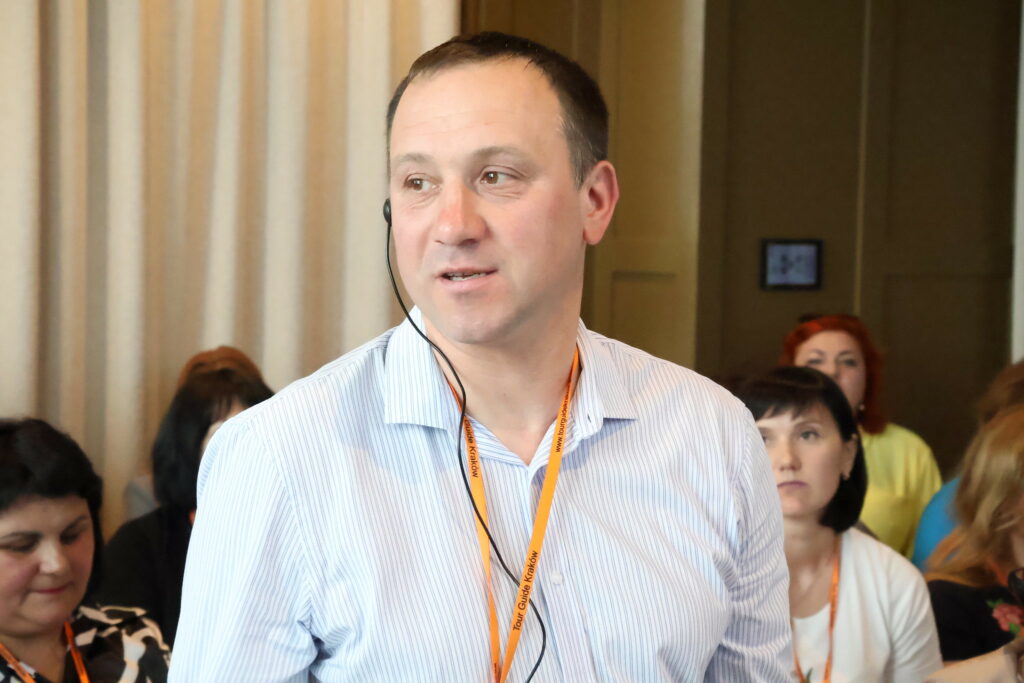
In general, USAID DOBRE experts, together with the Jerzy Regulski Foundation in Support for Local Democracy (FRDL, Poland), prepared a comprehensive program that allowed Ukrainian communities to learn about the Polish system of self-government, local government approaches to stimulating economic development and the activities of communal enterprises in gminas, solutions for energy self-sufficiency and the use of natural resources for their own development, and cooperation of self-governments with institutions supporting local and regional development.
“The USAID DOBRE Program provides its partner communities with both technical and financial support,” said Mr. Vitaliy Yurkiv, local economic development expert of the USAID DOBRE Program, “International study visits are one of the tools of such technical support, when community representatives have the opportunity to establish new contacts with colleagues in other countries, with experts, and learn about best practices or challenges in implementing a particular project, and implement the best tools for development or recovery in their communities.”
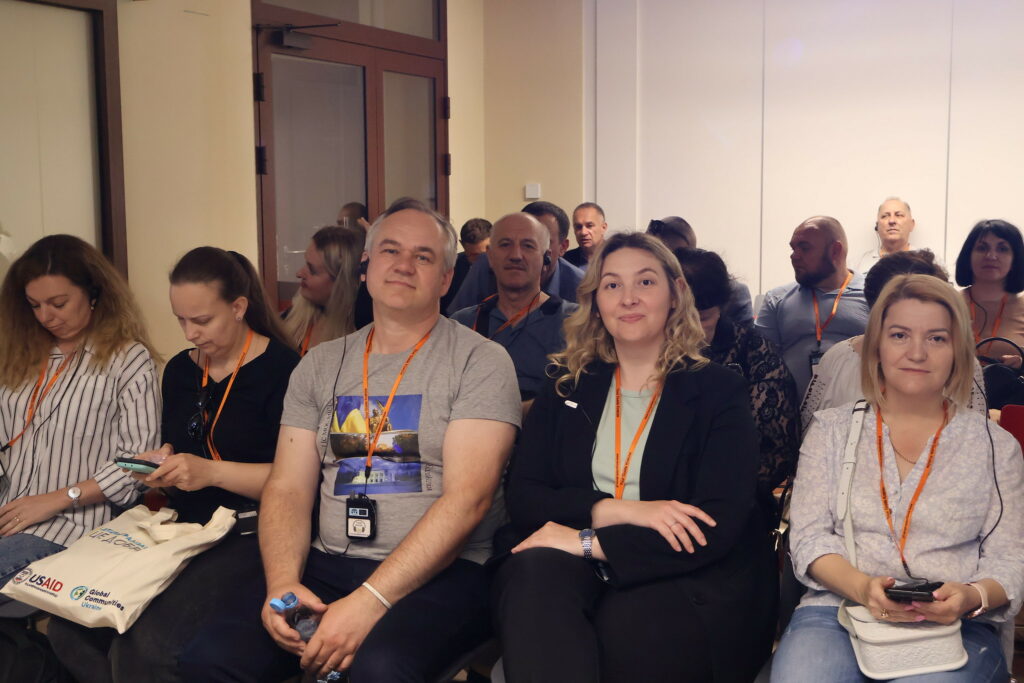
The USAID DOBRE Program has already helped each partner community create a development strategy and operational plans for its implementation. During the visit to their Polish counterparts, tour participants had the opportunity to pay attention to the priority projects they have at their home communities and learn about new effective ways to implement them, so that when they return home, they can use this knowledge to improve services and develop their own economies.
In addition to delving into the Polish experience, representatives of local governments, the Ministry of Community, Territorial and Infrastructure Development, and experts had the opportunity to communicate with each other, establish interregional contacts, and share their examples, as they work in the same realities and in the same legislative field. Although Ukrainian communities are in war-related conditions, and many frontline and near-frontline communities have completely different urgent problems, it is still important to compare and gain new perspective experience now. And to understand what we are doing better in Ukraine and what needs to be strengthened.
***
The USAID Program, “Decentralization Offering Better Results and Efficiency” (DOBRE), is a nine-year program, implemented by Global Communities and funded by the United States Agency for International Development. DOBRE has worked closely with 100 consolidated communities (CCs) in ten Oblasts of Ukraine to help them realize the benefits and meet the challenges brought by decentralization. DOBRE provides technical and material assistance to CCs to help them govern openly and accountably and meet the needs of their citizens; and supports citizens’ active engagement in decision-making and policy making. DOBRE’s support encompasses strategic planning; spatial planning; financial management; public service delivery; local economic development; capacity building; good governance practices; and gender- and youth-responsive policies.
In the period 2022 – 2025, DOBRE will be working directly with at least 60 CCs of Ukraine to help them cope with the consequences of the war, recover and rebuild, and resume their trajectory of positive, sustainable development. Partners with Global Communities in the DOBRE Program Consortium include the Ukrainian Crisis Media Center; the Foundation in Support of Local Democracy, and the Malopolska School of Public Administration at the Krakow University of Economics, Poland.


